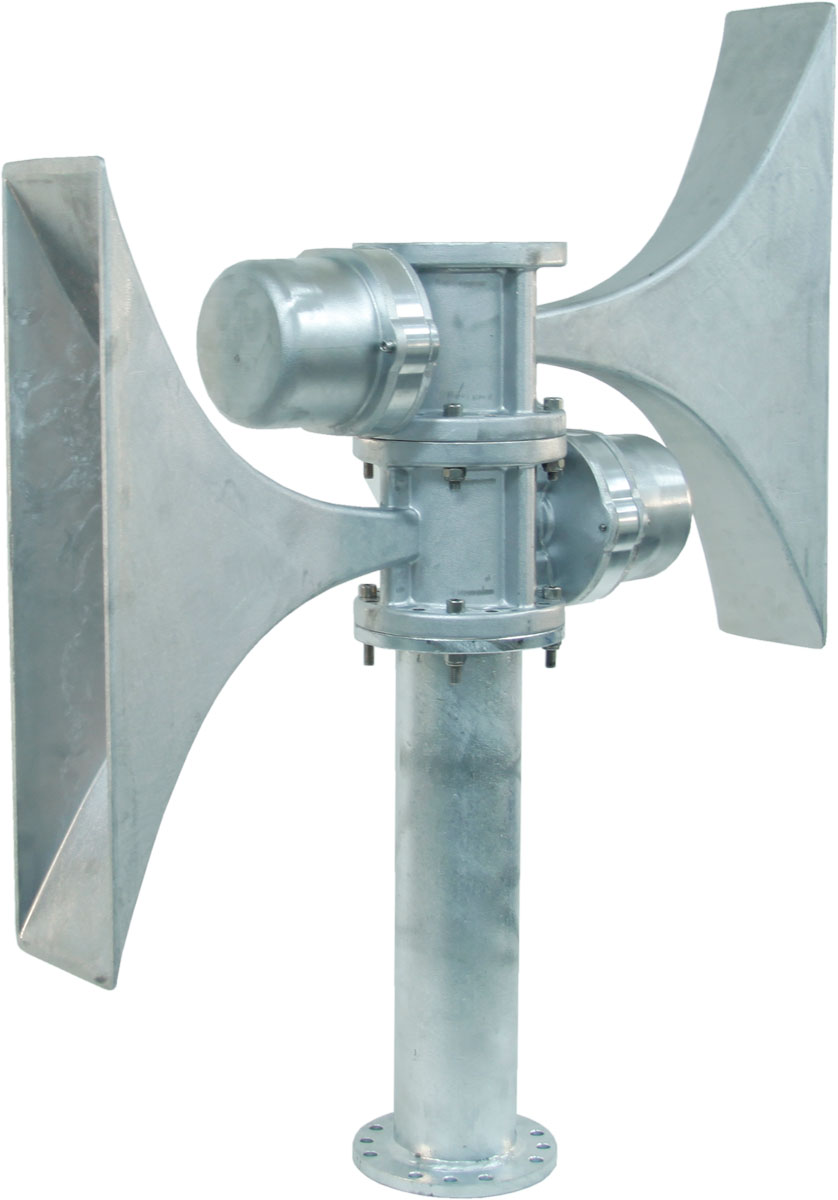 A siren is an acoustic device which is normally characterized by a high-pitched whine risingup and down.They have always served primarily as a mass notification system in military and civil areas.Especially with disaster alerts like fire or flooding, sirens are used to effectively warn and inform the public.In industrial sectors, sirens are mostly used as an extensive (several sq. km) alarm systemfor broadcasting fire or gas alarms, for example.Moreover, sirens are implemented for signaling purposes like notification of breaktime in industrial applications.In general, there are three types of sirens:
A siren is an acoustic device which is normally characterized by a high-pitched whine risingup and down.They have always served primarily as a mass notification system in military and civil areas.Especially with disaster alerts like fire or flooding, sirens are used to effectively warn and inform the public.In industrial sectors, sirens are mostly used as an extensive (several sq. km) alarm systemfor broadcasting fire or gas alarms, for example.Moreover, sirens are implemented for signaling purposes like notification of breaktime in industrial applications.In general, there are three types of sirens:
- Mechanical sirens
- Pneumatic sirens
- Electronic sirens
Mechanical sirens were designed as motor sirens until the end of the last century.The common German type of motor sirens was equipped with a three-phase motor of approximately 5 kVA and 35 A starting current. Due to the interruption of air flow caused by rotation, the characteristic acoustic signal is generated.Approximately 80% of all sirens in use in Germany are still mechanical / or motor sirens.The disadvantages of a mechanical siren are manifold:
- Mechanical components are vulnerable to damage and require intensive maintenance
- No batteries (= high power consumption)
- Only one fixed frequency (variations solely possible via switch on /off)
- No speech announcements possible
Pneumatic sirens create their signal similar to a mechanical siren with cyclical interruptions of the air flow. However, in contrast to motor sirens, pneumatic sirens generate the air flow by compressed air.For approximately 25 years now, modern siren systems are designed as electronic sirens.They use conventional driver systems (dynamic midrange driver for horn speakers), combined with a horn system. Therefore, the tone signal is generated with a loudspeaker as well as an electronic amplifier.The advantages are obvious:
- Almost no maintenance required
- Significantly less power consumption, thus battery backup possible
- Speech announcements possible (which cannot be realized with mechanical or pneumatic sirens)
- Various signals (frequency and timed sequence) possible
What are your thoughts about sirens? INDUSTRONIC now offers a siren solution. Why don’t you have a look on our flyer.
0 thoughts to “Sirens – Mass Notification since 1819”
Dear Sir,
We want to install Siren systems that can operate as local manual or remote.by radio, gsm.
do you have the product for this configuration
Dear Mr. Wahab,
thank you for your reply.
Of course we can help you to find a solution for your demands and requirements.
First thing to say is that the ‘INDUSTRONIC Industrial Siren Solution’ is designed for applications in industrial surroundings – but not for public authorities mass warnings.
We designed it similar to a very big and powerful loudspeaker, for this purpose the 100V option was implemented.
Along with our INTRON-D plus PAGA and Communication System the Siren System can be activated in multiple ways :
– timer
– automatic
– manual
– incoming alarms (Gas, Fire, …)
The second solution is to implement a Siren System as a ‘Stand-Alone-Siren-System’ with the possibility to interface it with our INTRON-D plus PAGA and Communication System.
The ‘Stand-Alone-Siren-System’ can provide you with all the options that you might need,
For example:
– GSM activation
– Radio activation
– Solar panel for independent power supply
We would like to provide you with the right information after we gather your requirements. Therefore we will forward your contact data to our responsible Area Sales Manager.
Our sales staff would be happy to help you finding the right solution.
If you have any further questions, please feel free to contact us again.
Best regards,
Janina